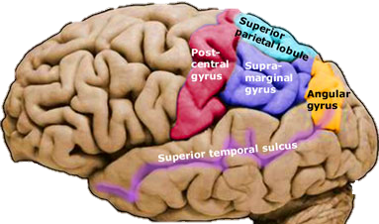Ever since I’ve been at home from school, I’ve had much more time to spend with my family. One of our favorite things to do together is watch the TV show “America’s Got Talent”. We literally have hundreds of recorded episodes just for the purpose of watching reruns together. One night we were watching this episode with a little girl, who sang. She was not just any singer; she was a ventriloquist. She seriously had some talent!
While watching her on TV, I started to wonder how cool it was that this little girl could make it seem like a puppet is producing actual words. This new interest reminded me of when we learned about Stravinsky in class. I started to do some research and I found all kinds of cool stuff about sound illusions and something called visual capture. Visual capture is the dominance of your vision over your other senses. In regard to sound, when your vision dominates your hearing, what you see will determine what you hear, instead of hearing what is actually there. In ventriloquism, we see the puppets mouth moving, and the human’s mouth looks as if it is not moving, so it seems as if we are hearing the sound from the puppet. How cool is that?

A really popular example of visual capture in the science world is the McGurk Effect. This is a sound illusion that is caused by your brain listening to your eyes rather than your ears. A continuous stimulus sound is played over and over again, however each time the person on the screen move their mouth a different way when mouthing the sound. This causes us to hear a different sound each time, although the same sound is playing.
It is really cool to study all of the interesting things our brain does, but how is this possible? In order for this phenomenon to occur, there must be some kind of audio-visual integration (Alais 2004). According to a study done using BOLD fMRI, the superior temporal sulcus is believed to be responsible for the integration of auditory and visual cues (Burr 2009). People who lack this region are not able to experience the McGurk effect. This small area in the left temporal lobe is potentially responsible for all of the compelling tricks on the mind involving audiovisual integration.
In all, our brain is capable of thousands of different tasks, however there are some limitations. In light of these limitations comes really interesting tricks or illusions that our mind can play on our reality.

Works Cited
Alais D, Burr D (2004) “The ventriloquist effect results from near-optimal bimodal integration”. Curr Biol 14(3):257–262
Burr, D., Banks, M.S. & Morrone, M.C. (2009)“Auditory dominance over vision in the perception of interval duration”. Exp Brain Res 198, 49. https://doi.org/10.1007/s00221-009-1933-z
Ventriloquism was something I was really interested in as a child too. It really is amazing to think how easily our brains are fooled in the grand scheme of things. It makes sense that it sacrifices some accuracy in favor of multitasking though!
I watched so many clips of Darci Lynne a couple years ago! I was so fascinated by her talent and I never even thought about the science behind ventriloquism, but I’m glad I read your blog post. It’s so interesting that you can essentially “trick your brain” to listen to your eyes instead of the ears.